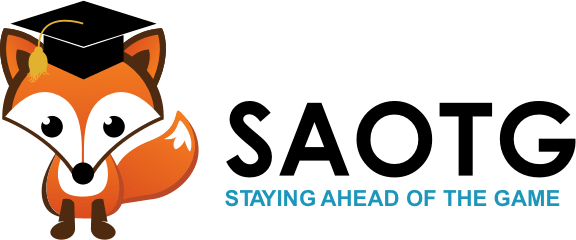Group projects are ubiquitous. Middle and high school teachers of every subject assign at least one group project per year. From group lab reports in science classes to group presentations in history class, group projects are significant contributors to a student’s final grade. But these projects have more than just an academic impact; they present unique Executive Function (EF) challenges. In fact, these projects aren’t all that academic, to begin with — in many ways, they assess a student’s EF development.
Much like long-term projects like research papers assess different skills than day-to-day assignments; group projects assess different skills than individual assignments. For starters, group projects (by definition) have a social element. Adding a second cook to the kitchen comes with a host of new difficulties. How will the group divide up work? How will the group decide on where to start? Who makes the final decisions? What happens if one of the group members gets sick? How does the group share information? Does the group need to schedule meetings?
I could keep listing questions, but I think the point has been made. Before students even touch the “academic component” of a group project, they have to deal with myriad EF issues like organization, time management, learning skills, and impression management. At SAOTG, we call these four EF concepts the four pillars of Executive Function. Group projects are the perfect example of the four pillars in action. In the sections below, we will discuss the EF challenges of group projects and some possible solutions. Ultimately, this blog post aims to highlight why group projects are difficult and how students can adjust to the challenges.
Organization
First, group projects demand a heightened sense of organization from every participant. Although we typically talk about organization on an individual level (binders, study spaces, etc.), many of the principles of organization apply to groups too. For instance, one of the principles of organizational curriculum is to use habits and routines to make good decision-making easier. It’s much easier to avoid procrastination when you remove the barriers to getting started. We do this through our binder system, which makes finding homework simpler. The same idea applies to group projects.
Make decisions that make everyone’s lives easier. Unlike individual tasks, where the process might be linear and within one’s control, a group project requires the alignment of multiple minds, which requires collaborating across devices. Utilizing tools such as Google Docs or Microsoft Teams, which offer real-time collaboration, makes everyone’s lives easier. These platforms not only act as a workspace but also as an organizational tool, cataloging thoughts and ensuring everyone is on the same page. Students should make it a priority to get on the same page organizationally before any “work” actually starts. Pick a platform, make sure everyone has access to it and lay the groundwork for keeping everyone on the same page.
Beyond selecting the right tools, there’s the task of actually diving into the project. With diverse perspectives in the mix, it’s crucial to divide and conquer. This involves clearly defining roles and tasks for each member. It’s not just about dividing work but ensuring that everyone knows their responsibilities and the overarching goal of the project. An astute student might even suggest creating a shared project outline or a visual roadmap, allowing members to visualize the project’s trajectory and their role in it. Students should dissect the assignment instructions and divide the project accordingly. This primary step makes the entire project easier in the long run because it keeps lines of accountability clear.
Time Management
The very first time management hurdle many groups face is synchronizing their calendars. Students are juggling multiple responsibilities, from school assignments to extracurriculars, making it a real challenge to find common free slots for meetings. Students also have to sync up the “unassigned deadlines” for group projects. The lab report says it’s due in two weeks, but there are a number of mini-deadlines between now and then. One effective solution is establishing a project timeline right at the outset, which provides clarity about key milestones and deadlines. Students should get everything out into the open, including assigned and unassigned deadlines.
However, setting a timeline is just the first step. Regular group check-ins become pivotal the longer the project goes. These aren’t just touchpoints to see project progress but also opportunities to adjust timelines, address unforeseen challenges, and ensure everyone remains accountable. Once each individual understands the group’s schedule, it’s easier to plan individually.
Learning Skills
At its core, every group project is a learning opportunity. Each student brings a unique set of strengths to the table, be it in research, writing, presentation, or problem-solving. Recognizing and leveraging these strengths is both an art and a skill. Open communication is the cornerstone here. Encouraging members to voice their strengths and their challenges allows for a more balanced distribution of tasks.
However, it’s important not to create project silos where each student remains compartmentalized and fails to grasp the overall goal of the project. Too much compartmentalization can cause problems down the road. For instance, a student might struggle on the mid-term if they fail to grasp a concept from the project. The best solution for this is to make sure everyone has a hand in the concluding elements of the project. These are the macro, broad tasks that require a 30,000-foot view of the concept.
Impression Management
Lastly, with group projects, academic prowess alone doesn’t cut it. How students present themselves and manage their relationships within the group holds equal weight. This goes beyond just being punctual or delivering tasks on time. It’s about building a positive group dynamic where every member feels valued and heard. Effective communication is pivotal. This doesn’t just mean articulating ideas clearly but also actively listening to others. Furthermore, managing disagreements constructively, without letting them escalate into conflicts, speaks volumes about a student’s maturity and interpersonal skills. The goal is not just to produce a stellar project but also to foster a harmonious working relationship with peers. These soft skills, often overlooked, lay the foundation for both academic and professional success in the future.
Closing Thoughts
Group projects are a crucible for developing and honing vital Executive Function skills. As parents, providing guidance and understanding these intricacies can help our children navigate these challenges with greater ease.
Dive deeper into this realm by exploring our other blogs or reach out to discover the comprehensive support offered by SAOTG’s one-on-one academic coaching program.





